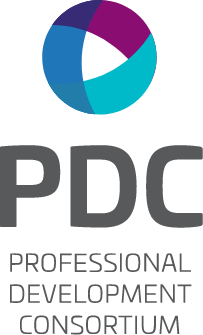You are here
Clarity is Kind: A Radical New Approach to Constructive Feedback
March 14, 2024
Author: Rachael Bosch
PDC Trusted Advisor
Rachael Bosch is the CEO and founder at Fringe PD, where their mission is to help people communicate better and create more human workplaces.
A lot goes into someone's professional growth, and feedback almost always plays a key role. With the importance of getting quality feedback in all our professional (and personal!) lives, I am constantly amazed at how 'nice' feedback continues to permeate. Being 'nice' when giving feedback has been the norm for too long, resulting in vague or passive responses that don't help us improve professionally.
So, I thought it was time to explore what sometimes feels like a radically new perspective on feedback, emphasizing the need for clarity over arbitrary ‘niceness.’ Let's unpack how a paradigm shift can lead to more effective leadership, stronger team performance, and a workplace environment that fosters growth and innovation.
The Misconception of ‘Nice’ Feedback
So many folks we work with equate ‘nice’ feedback with positivity, believing that gentle and agreeable comments will keep team morale high and everyone on their side. These same people will come to us reporting that they are giving the same feedback repeatedly with no change from their colleagues. While there’s value in creating a supportive work environment, focusing on being liked and sounding nice as a leader is frequently a barrier to helping people learn and grow. And honestly, that's what many people are looking for professionally.
This brand of ‘nice’ feedback, often characterized by vague, non-committal descriptors of work product like "good," fails to provide tangible insights into performance or areas for improvement. It’s akin to getting a thumbs-up from a friend at the end of your karaoke performance. You might feel comforted, but you don’t have any specifics about how the performance went.
In reality, team members need honest, direct, actionable feedback to promote learning and development rather than the ‘nice’ approach designed to preserve egos. When leaders shy away from delivering critique to avoid conflict or keep up appearances, they do their teams a disservice.
Liked vs. Respected: The New World of Leadership
It's time for a fresh perspective on leadership. We are moving away from the era of '” I'm not a regular boss, I’m a cool boss,' i.e., the leader who gives vague feedback to make sure no one thinks they are too mean. Instead, we need leaders known for their honesty and commitment to their team's growth. Leaders who understand that being clear is the kindest thing you can do to help support your colleagues.
And since we are talking about clarity, let me be clear: this shift isn't about being harsh in feedback or saying whatever you think at the moment with little or no filter but about showing genuine care for our colleagues by helping them improve. This kind of leadership fosters an environment where open, helpful feedback is not just welcomed but encouraged.
Leaders who offer clear and supportive feedback are seen as genuine and dedicated to their team's success. They create cultures of psychological safety where honest discussions are the norm, and team members can develop without fear of hurt feelings or office politics.
The Power of the S.E.A.
Delivering feedback in a Specific, Experiential, and Actionable way is a powerful driver of clarity. When team members receive direct commentary on their work (both affirmative and constructive), they can adjust and improve their performance in real time. The key element here is that S.E.A. feedback is based on past and present behaviors, which drives clarity.
S.E.A. feedback also fosters open dialogue. By giving people feedback in a clear behavioral framework, team members are empowered to use that experience to express their thoughts openly about their work and expectations. By leading with clear feedback, you teach others to deliver clear feedback!
We hear a lot about the need to create a "feedback culture" in law firms, and this type of behavioral conversation is where that feedback culture begins. Regardless of the feedback model you use - if it is based on behavior, drives specificity, and has a forward-moving component, you will be set up for success in helping people drive the change needed to make feedback of all kinds more frequent and culturally standard.
Fostering Trust and Mutual Respect
When feedback is delivered with clarity and care, a powerful dynamic of trust and mutual respect can blossom within teams. People aren't wasting time trying to guess how they are performing; they are empowered to take control of their professional development through the guidance of their leaders. Trust is the bedrock upon which all successful relationships, including effective teams, are built. Feedback has been seen to erode trust for far too long - let’s change the narrative! Clear feedback allows for a culture of trust and creates environments where collaboration and idea-sharing flourish.
By prioritizing clear and candid over breezy and non-confrontational, leaders can move away from 'nice' and start embracing 'kind' as a driver of team engagement. It is 'nice' to keep things copacetic; it is 'kind' to have difficult conversations that drive personal and professional growth.
Implementing Feedback Strategies
OK, you're still reading so I'm betting you are on board conceptually. Let's talk about how to make the switch from nice to kind. Shifting the feedback paradigm within an organization is no small feat. It requires a concerted effort to emphasize the importance of clear, constructive communication as a core value. Here are some strategies for leaders and team members to initiate this transformation:
·Clearly Define Performance Expectations
Work with your team to establish transparent performance metrics and goals. Ensure that each team member understands what is expected of them and how their performance will be measured. Clarity on expectations sets the stage for feedback grounded in these objective criteria.
·Establish Regular Feedback Forums
Create a routine schedule for feedback sessions, whether one-on-one meetings or team-wide discussions. Casual and ad-hoc feedback opportunities should also be encouraged, allowing for more immediate and contextually relevant discussions about work progress.
·Prioritize Actionable Critique
Encourage feedback that is specific and actionable. Help team members understand not just what needs to improve but also how they can go about making those improvements. This turns feedback into a learning experience and a roadmap for professional development.
·Lead by Example
Leaders must be the torchbearers for this new feedback philosophy. Be open to critique yourself, and demonstrate that giving and receiving feedback is vital to professional growth. This authenticity will trickle down, leading to a more open and responsive team culture.
Unlocking Potential through Clarity and Care
Your charge is clear: it's time to reevaluate our approach to feedback and commit to being catalysts for change. Leaders can unlock their team's potential by championing 'kind' over ‘nice’ in feedback. Challenge the status quo of ‘nice’ feedback and start leading with clarity and care. The transformation won’t be instant, but the ripple effects of this shift will be felt in every aspect of your team’s performance and satisfaction.


